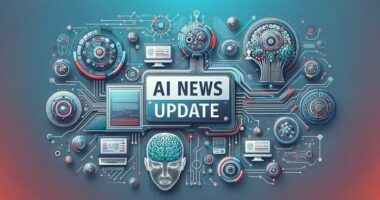The AI community has been buzzing with excitement, skepticism, and intrigue ever since OpenAI announced the release of ChatGPT 6. This new version of the popular language model has stirred up debates about its capabilities, ethical concerns, and potential impacts on various industries. In this article, we will explore the reasons behind the uproar in the AI community, examining the features, concerns, and broader implications of ChatGPT 6.
What Is ChatGPT 6? A Quick Overview
ChatGPT 6 is the latest iteration of OpenAI’s powerful language model. Building upon its predecessors, ChatGPT 6 boasts significant improvements in understanding, generation, and interaction capabilities. It has been designed to deliver more contextually accurate responses, improved conversational abilities, and a deeper understanding of nuanced topics.
Key Features of ChatGPT 6
-
Enhanced Contextual Understanding: ChatGPT 6 can process larger chunks of text, understand long-form conversations, and maintain context over extended exchanges.
-
Improved Emotional Intelligence: The new version is more adept at recognizing and responding to emotional cues, making conversations feel more human-like.
-
Better Multimodal Capabilities: ChatGPT 6 can seamlessly integrate text, images, and possibly even video, providing richer responses and more comprehensive interactions.
-
Advanced Problem-Solving: The model has been fine-tuned to tackle more complex questions, offering highly accurate and sophisticated solutions across diverse domains.
But despite these impressive advancements, ChatGPT 6 has sparked significant controversy in the AI community. Let’s dive into the reasons why.
Why the Uproar?
1. Ethical and Safety Concerns
With every new iteration of ChatGPT, questions about its ethical implications become more pressing. As ChatGPT 6 is far more capable than previous versions, there are concerns about how it could be misused. One of the main fears is that people could use the model to generate malicious content, fake news, or even deepfake text that is nearly indistinguishable from genuine human writing.
Potential for Disinformation
ChatGPT 6’s ability to produce hyper-realistic text could lead to a rise in disinformation campaigns. While the model itself does not intentionally spread falsehoods, malicious actors might exploit its power to create convincing but fabricated content. The idea that AI can write with such human-like fluidity raises alarms about its potential to deceive people, especially if it’s used in political or social manipulation.
Lack of Regulation
Currently, there’s limited regulation governing the use of generative AI, leaving it open to potential abuse. As ChatGPT 6 continues to evolve, experts in AI ethics are urging for more robust frameworks to ensure that it’s used safely and responsibly. Without these guardrails, the potential harm of AI models could outweigh their benefits.
2. Increased Competition and Job Displacement
Another reason for the uproar is the impact ChatGPT 6 could have on the job market. With its advanced capabilities, many industries are at risk of seeing automation replace human workers, especially in roles related to writing, customer service, and content generation.
Job Losses in Content Creation
As ChatGPT 6 becomes capable of writing more nuanced and sophisticated content, companies may see an opportunity to reduce costs by relying on AI-generated content instead of human writers. This could lead to job losses in fields like journalism, advertising, and marketing. Freelance writers, too, could find themselves struggling as businesses turn to more affordable and efficient AI solutions.
AI in Customer Service
ChatGPT 6 could also be implemented in customer support systems, where its ability to handle complex inquiries with minimal human intervention could reduce the need for customer service representatives. While this may enhance efficiency and lower operational costs for businesses, it raises concerns about job displacement and the growing reliance on AI in customer-facing roles.
3. Bias and Fairness Issues
As with previous versions, ChatGPT 6 is not immune to bias. The model has been trained on massive datasets scraped from the internet, and if those datasets contain biased or prejudiced information, the AI could inadvertently perpetuate harmful stereotypes or reinforce existing inequalities.
Addressing Bias in AI Models
Despite efforts to reduce bias, ChatGPT 6 might still exhibit biases, particularly when dealing with sensitive topics such as race, gender, or politics. This has been a point of contention in the AI community, as researchers and developers continue to tackle the problem of creating fair and unbiased models. There is growing pressure on companies like OpenAI to implement more rigorous methods for auditing AI behavior and ensuring that these systems don’t perpetuate societal inequities.
4. Loss of Human Touch in Communication
While the technological advancements in ChatGPT 6 are impressive, some argue that the more sophisticated it becomes, the more it risks replacing genuine human interaction. As AI gets better at mimicking human behavior and emotions, there is a fear that it could lead to a decline in authentic human connections.
The “AI as a Substitute” Dilemma
For instance, in mental health care or counseling, while AI can be a helpful tool, the fear is that it could replace human therapists, who bring empathy and emotional insight that no AI can replicate. Similarly, in personal relationships, excessive reliance on AI chatbots for companionship or socializing might lead to people becoming more isolated or less emotionally connected to others.
5. Privacy and Data Security Concerns
With every new version of ChatGPT, privacy concerns continue to mount. Users are often unaware of how much personal data is being collected during interactions with the AI. As ChatGPT 6 integrates more personalized features, like understanding user preferences or remembering past conversations, there is an increasing risk of data being misused or falling into the wrong hands.
Data Misuse and Invasive AI
While OpenAI has taken steps to ensure that data collection is minimal, privacy advocates are concerned about the vast amounts of data that can be gathered by such systems. The more personalized the AI, the greater the risk of personal data being misused. As AI systems become more capable of storing long-term data about users, there will be an ongoing push to develop stronger privacy protections.
The Road Ahead: What’s Next for ChatGPT 6?
Despite the concerns surrounding ChatGPT 6, there is also significant optimism in the AI community. Developers, researchers, and companies see its potential to revolutionize industries ranging from education to healthcare. As with any major technological leap, it will take time for the full impact to be understood.
Ensuring Ethical Use of AI
One key area for development is the creation of stricter ethical guidelines and regulations for AI systems. OpenAI and other tech companies will need to collaborate with governments, academic institutions, and other stakeholders to develop frameworks that ensure AI benefits society while minimizing its risks.
Future Advancements in AI
As we look forward, it’s likely that ChatGPT 6 will be just the beginning. The ongoing development of generative models promises even more powerful versions in the future. With every new iteration, the conversation about how to balance innovation with ethical responsibility will only grow louder.
Conclusion: Why the Uproar?
In conclusion, ChatGPT 6 has generated considerable controversy within the AI community for several reasons, ranging from ethical and privacy concerns to fears of job displacement and loss of human connection. As the technology continues to evolve, it will be crucial for developers, researchers, and policymakers to ensure that AI is used in ways that benefit society without sacrificing safety, fairness, or human values.
While ChatGPT 6 represents a major leap forward in artificial intelligence, it is clear that with great power comes great responsibility. The future of AI will be shaped not just by technological advancements, but by how we navigate the challenges and concerns that accompany this new era of innovation.









